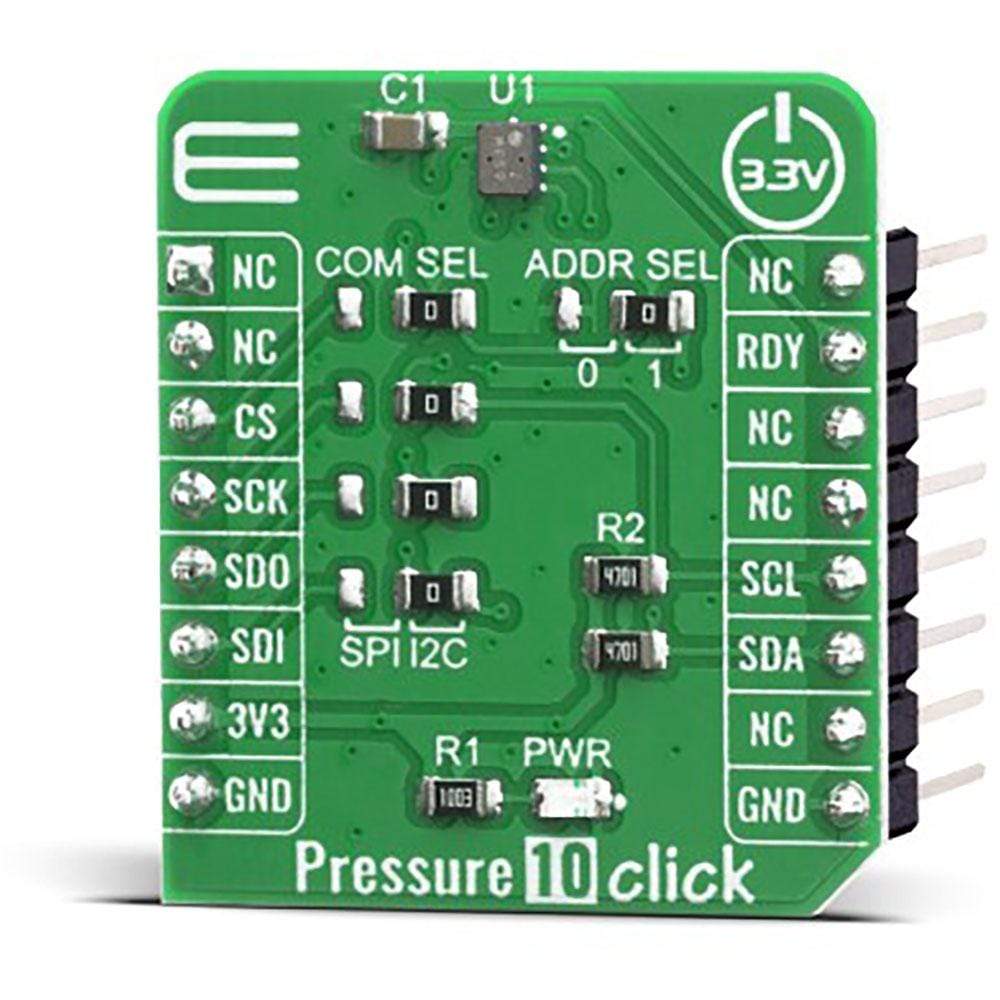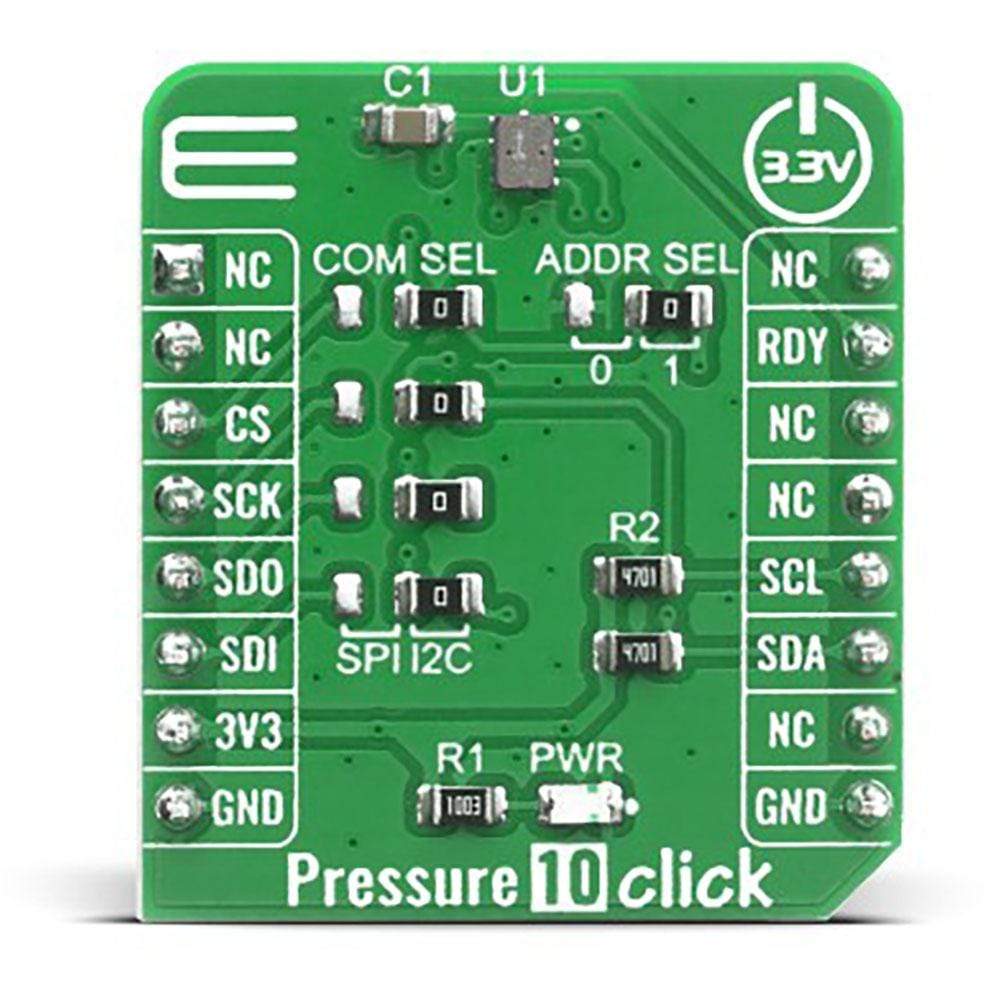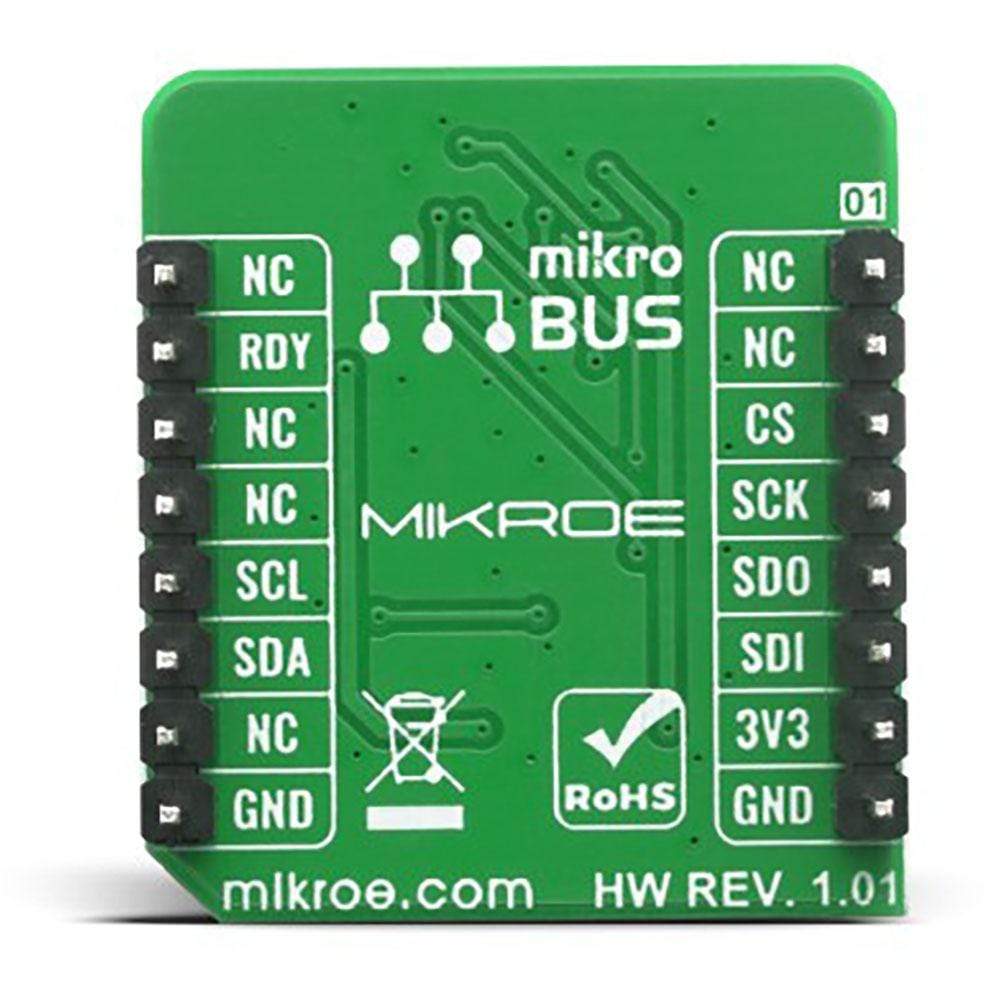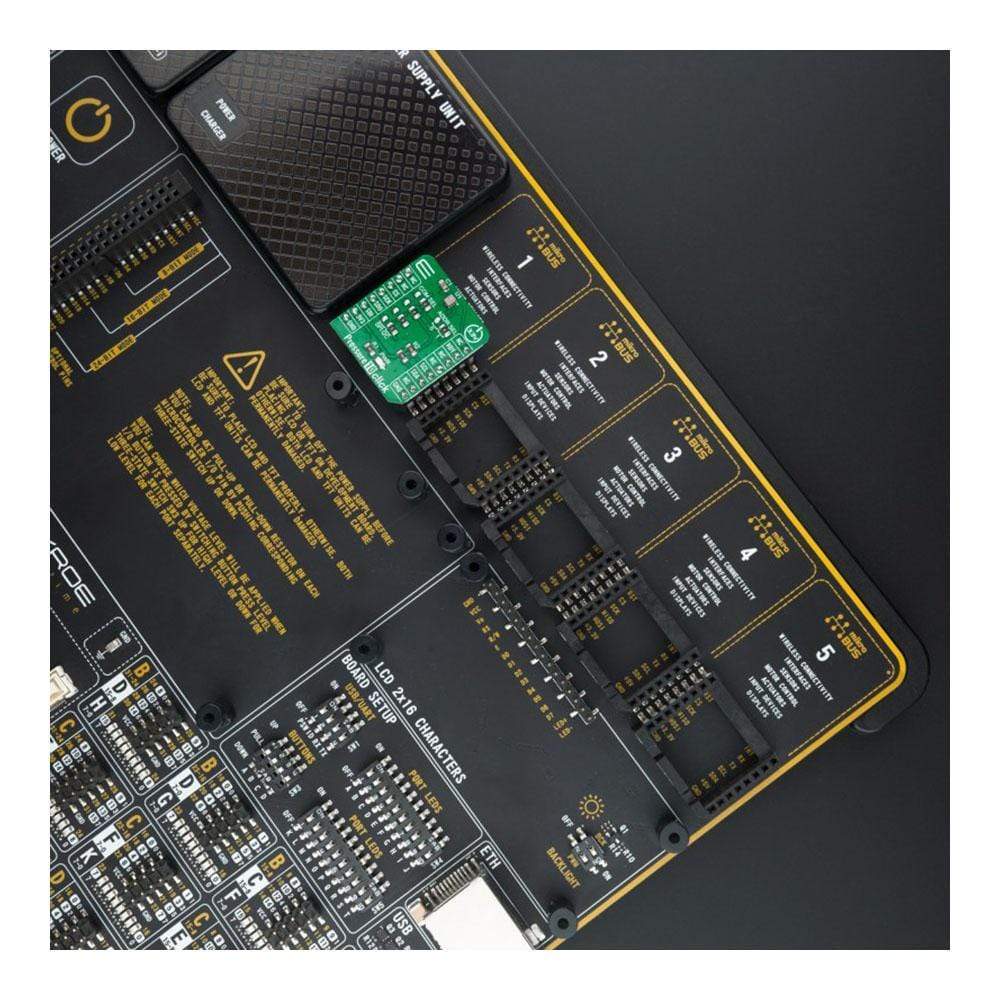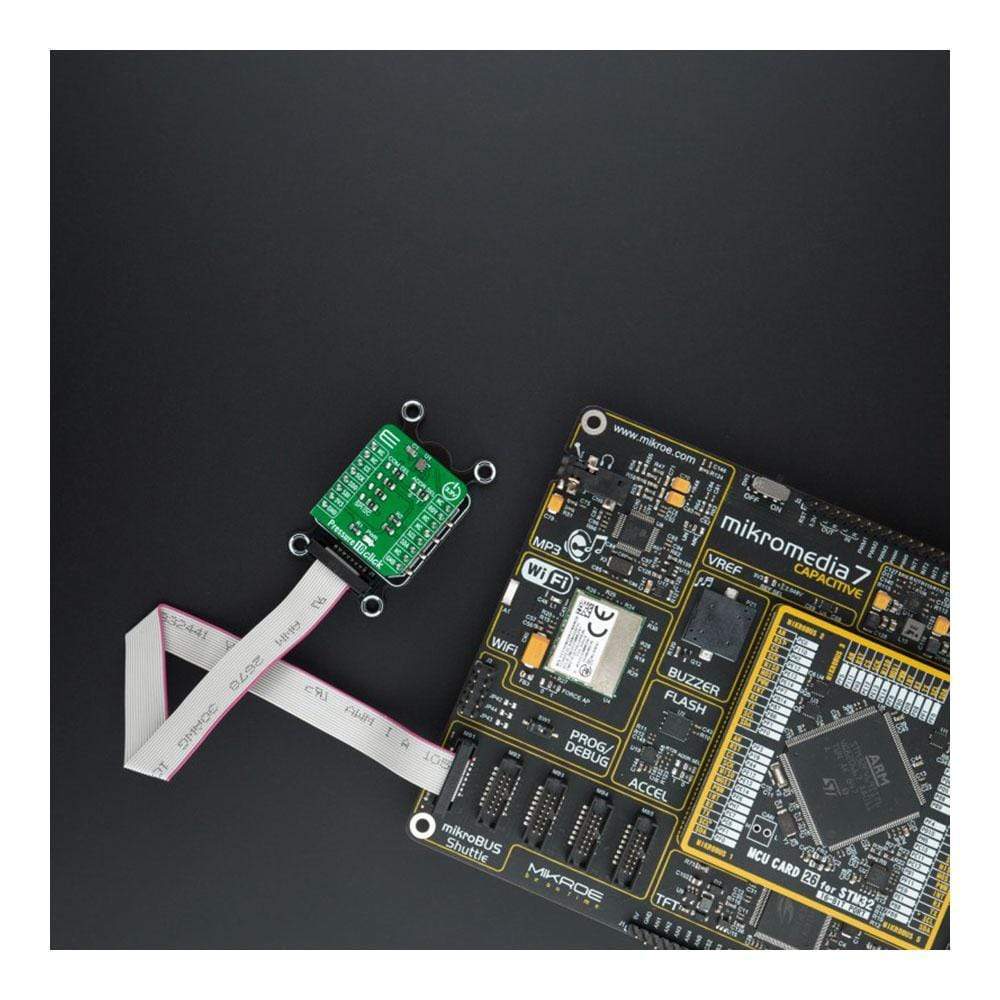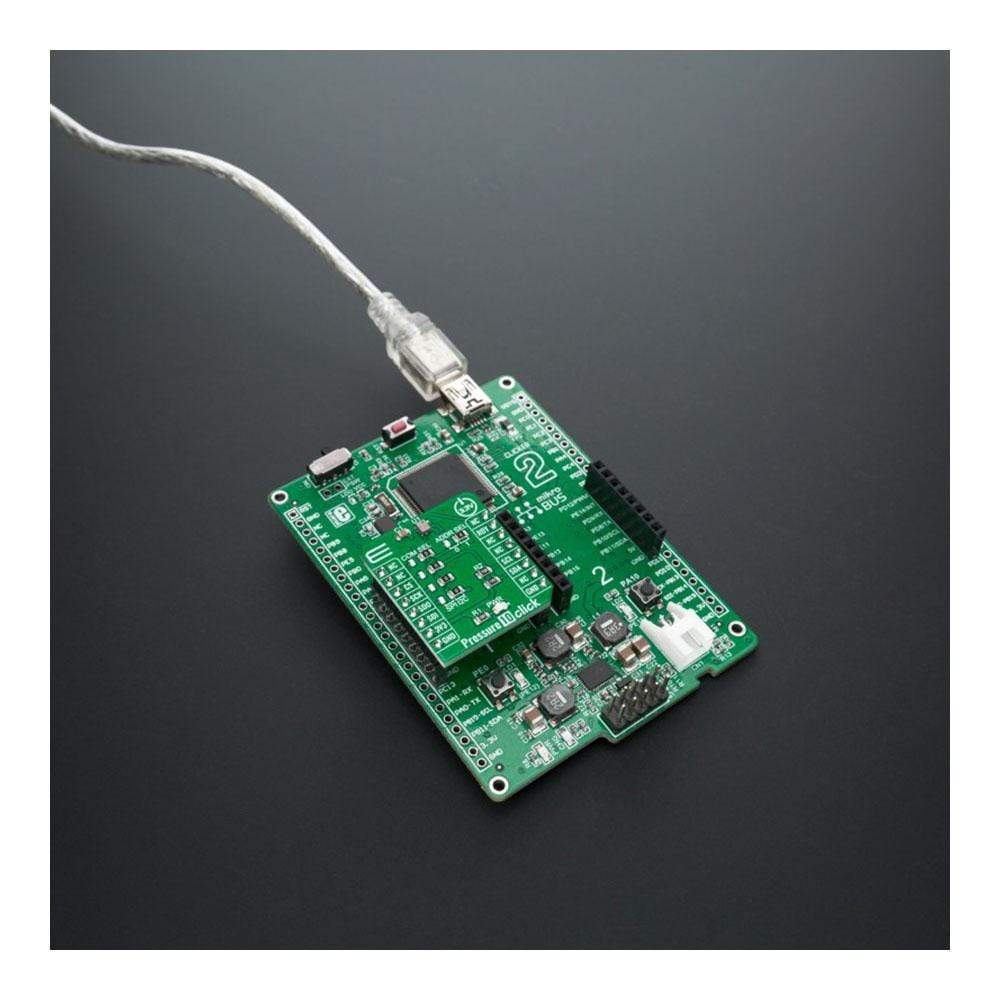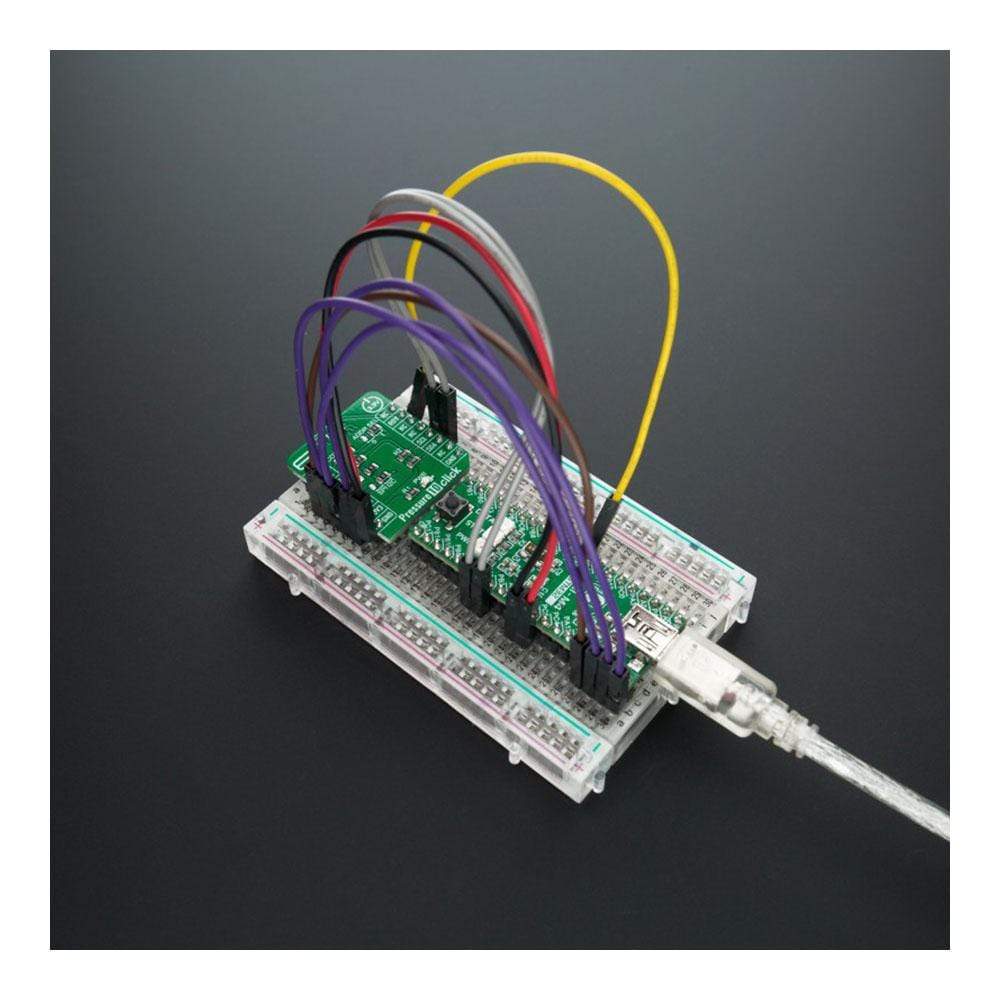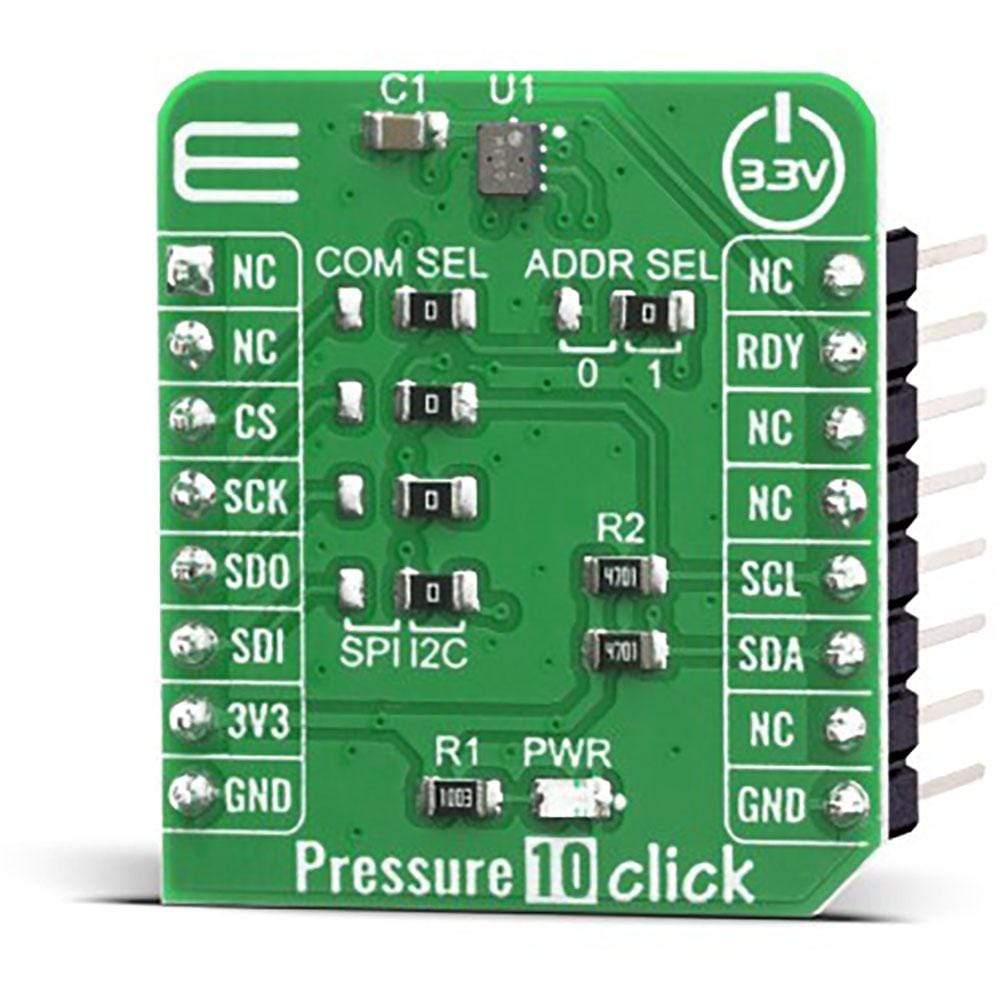
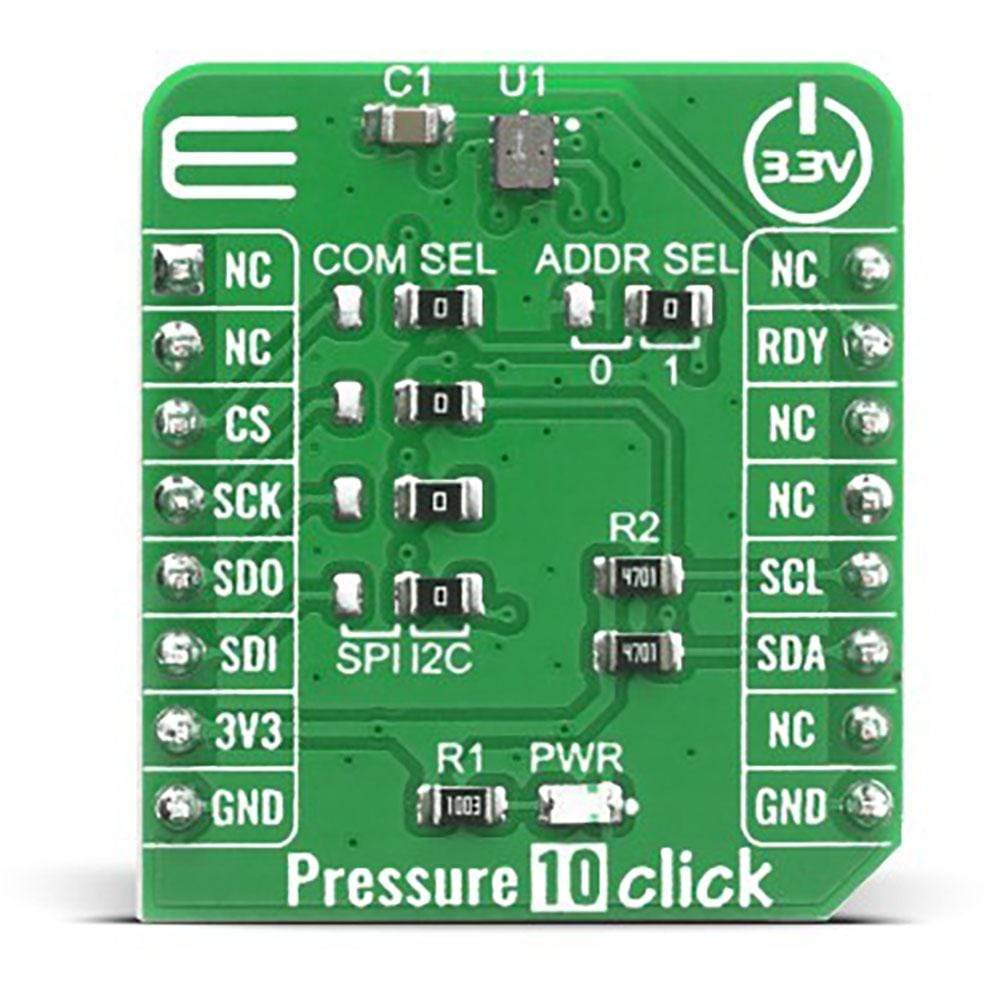
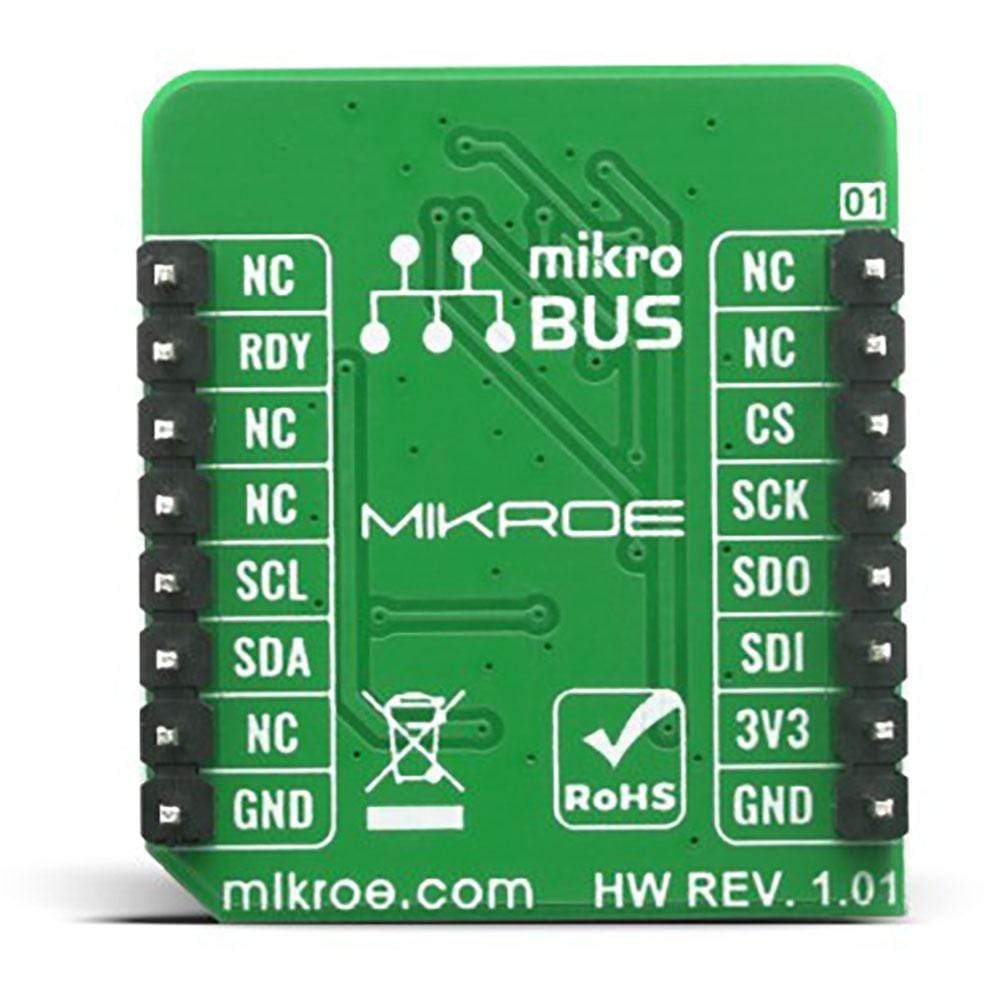
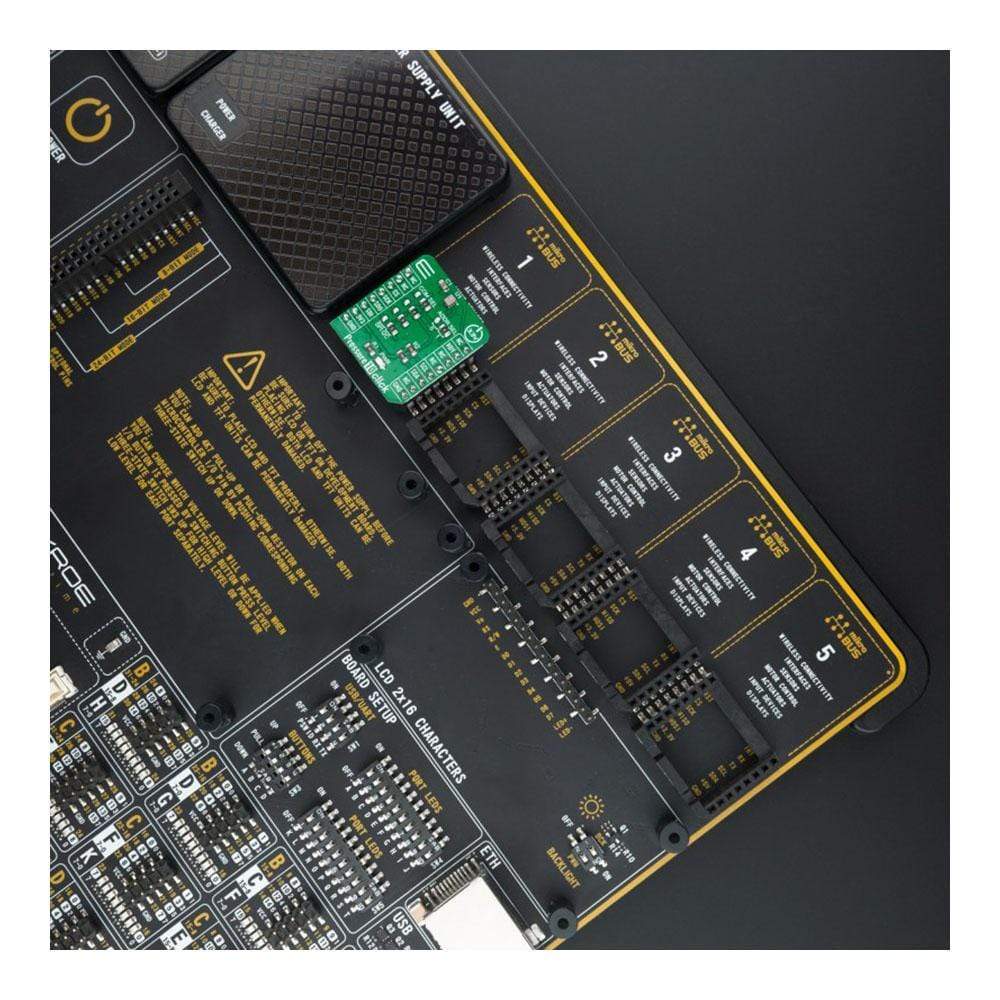
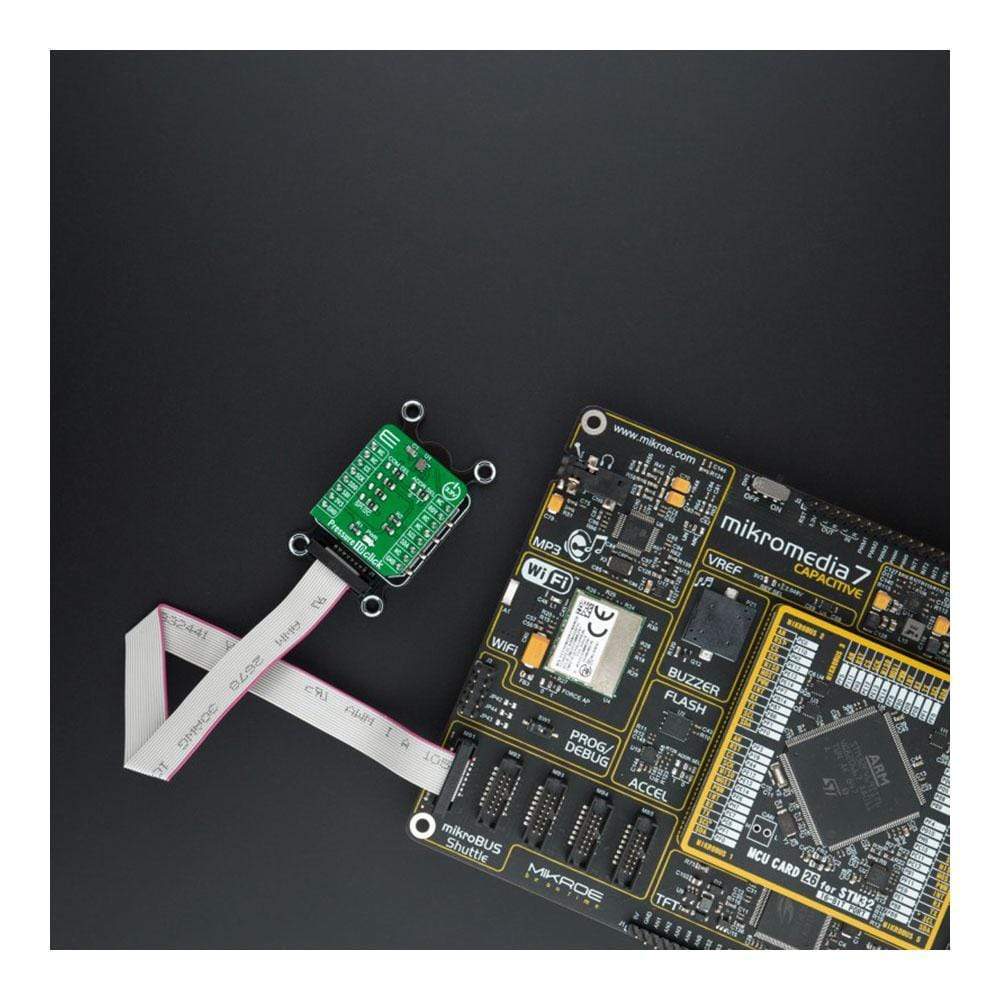
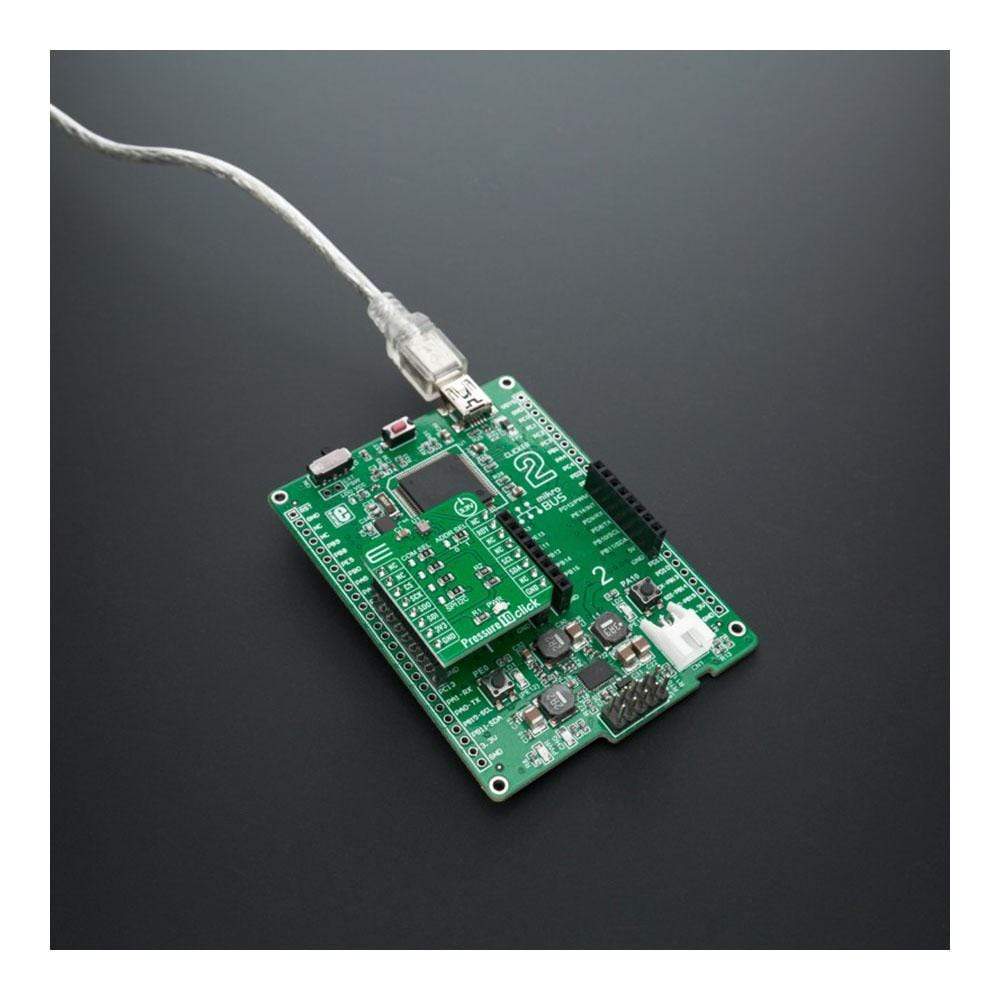
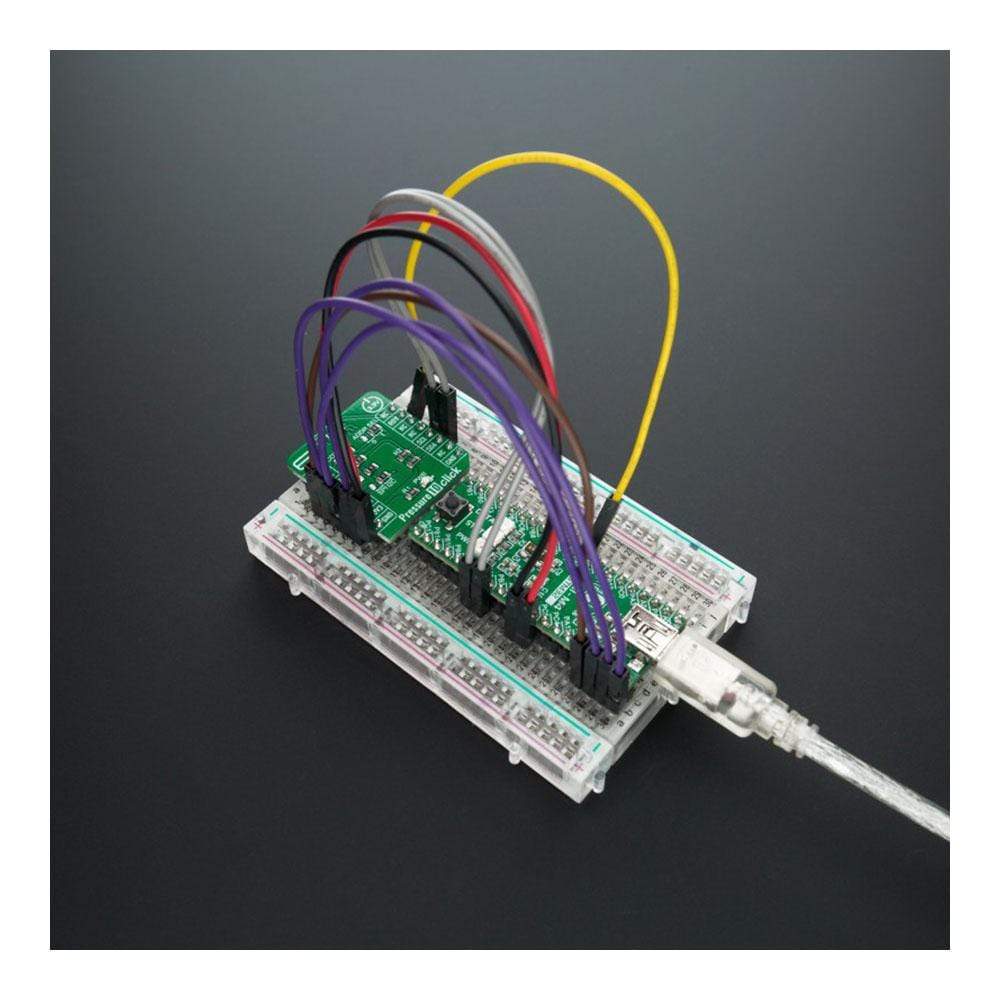
Overview
The Pressure 10 Click Board™ features a digital interface barometric pressure sensor, based on the piezoresistive bridge, labelled as HSPPAD042A, from ALPS Electric. It can use both SPI and I2C communication protocols, allowing it to be interfaced with a broad range of MCUs. Besides the pressure readings, this Click Board™ also offers a very accurate temperature reading, which is required for the pressure readings compensation and can be used in a wide range of battery-powered and portable applications thanks to its very low power consumption.
In addition, this product supports averaging and filtering for lower noise, and FIFO function. All these features make the Pressure 10 Click Board™ an ideal solution for the development of portable weather station applications, indoor navigation, altitude control for drones, and similar applications that rely on barometric pressure measurements.
Downloads
Le Pressure 10 Click Board™ est doté d'un capteur de pression barométrique à interface numérique, basé sur le pont piézorésistif, étiqueté HSPPAD042A, d'ALPS Electric. Il peut utiliser les protocoles de communication SPI et I2C, ce qui lui permet d'être interfacé avec une large gamme de microcontrôleurs. Outre les relevés de pression, ce Click Board™ offre également une lecture de température très précise, nécessaire à la compensation des relevés de pression, et peut être utilisé dans une large gamme d'applications alimentées par batterie et portables grâce à sa très faible consommation d'énergie.
De plus, ce produit prend en charge le calcul de moyenne et le filtrage pour réduire le bruit, ainsi que la fonction FIFO. Toutes ces fonctionnalités font du Pressure 10 Click Board™ une solution idéale pour le développement d'applications de stations météorologiques portables, de navigation en intérieur, de contrôle d'altitude pour les drones et d'applications similaires qui reposent sur des mesures de pression barométrique.
| General Information | |
|---|---|
Part Number (SKU) |
MIKROE-4142
|
Manufacturer |
|
| Physical and Mechanical | |
Weight |
0.016 kg
|
| Other | |
Country of Origin |
|
HS Code Customs Tariff code
|
|
EAN |
8606018717705
|
Warranty |
|
Frequently Asked Questions
Have a Question?
Be the first to ask a question about this.

